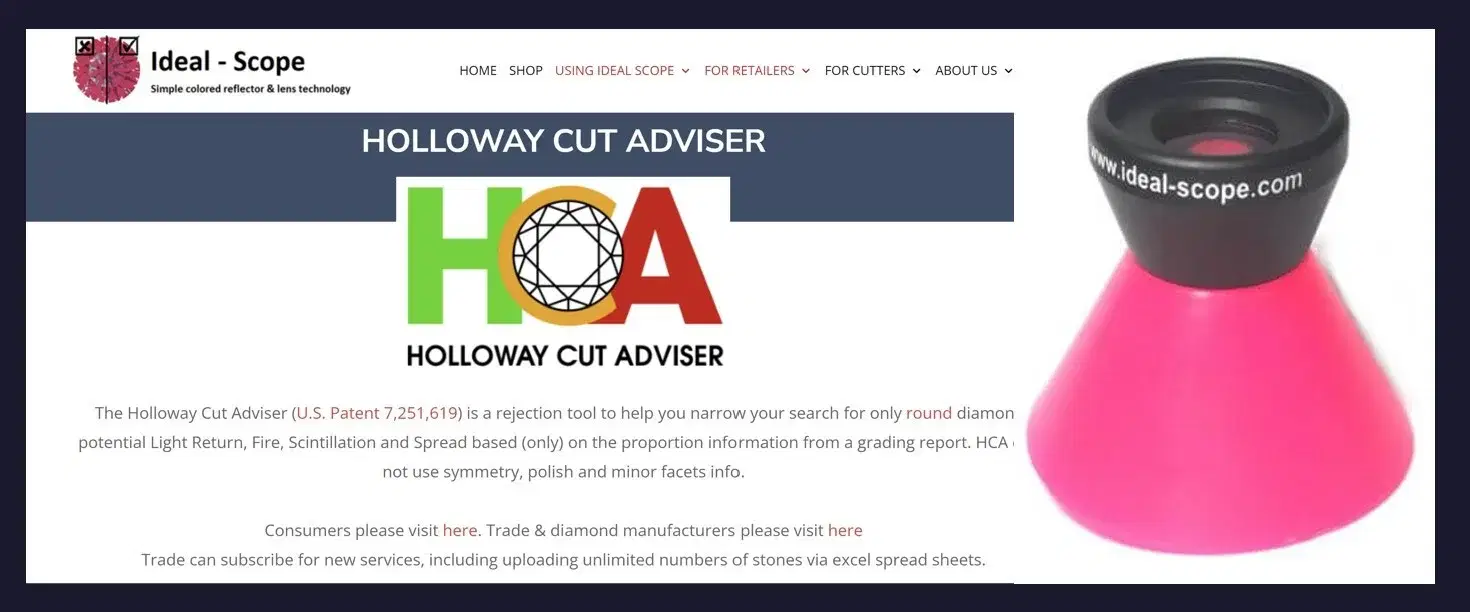Notwithstanding that this concept was popularized by Garry Holloway, the idea was birthed by a Japanese scientist known as Okuda. In the 1970s, Okuda developed various ways of studying the light performance of diamonds using colored reflectors in magnified scopes. The method was later popularized when Garry Holloway came up with the Ideal-scope.
The Ideal-scope is a simple magnifying tube built with red reflectors. It is designed to create a structured light environment, which is used to determine how a diamond handles light.
To examine the light performance of a diamond, the latter is placed on the Ideal-scope with its girdle aligned with the bottom of the tube. As light enters the crown from above, it is reflected in the observer’s eyes as red. The red light greatly pertains to the diamond’s scintillation. The light that escapes or leaks through the pavilion of the diamond appears white, while the light emanating from the highest angle seems black - the latter being the light blocked by the observer’s head.
The developer of the ideal scope, Garry Holloway FGAA, DipDT, JAA Appraiser, is a renowned geologist turned jeweler. Mr. Holloway founded Melbourne Precious Metals, presently known as Holloway Diamonds. The Diamond Technology graduate from the Gemological Association of Australia continues to lecture on one of his specialties - the Science of Light™ & Diamond Cut.
Before the ideal scope was designed, Professor Okuda’s concept had already led to the developing of another cutting-edge technology: The Fire Scope™. It was a limited distribution desktop device, and the Ideal-scope tube is its small, portable variant.
Besides gauging a diamond’s light-handling properties, the Ideal-scope may also be used to grade optical symmetry. A professional observer can predict the amount of fire and scintillation a diamond has through the tube. The information obtained is useful not only for diamond buyers keen on investing in an optically symmetrical stone but also for diamond polishers who can adjust the disproportional facets and ensure that the stone achieves its ideal optical symmetry.
One of the best things about the ideal scope is that it can be used with a diamond of any shape, clarity, or color

